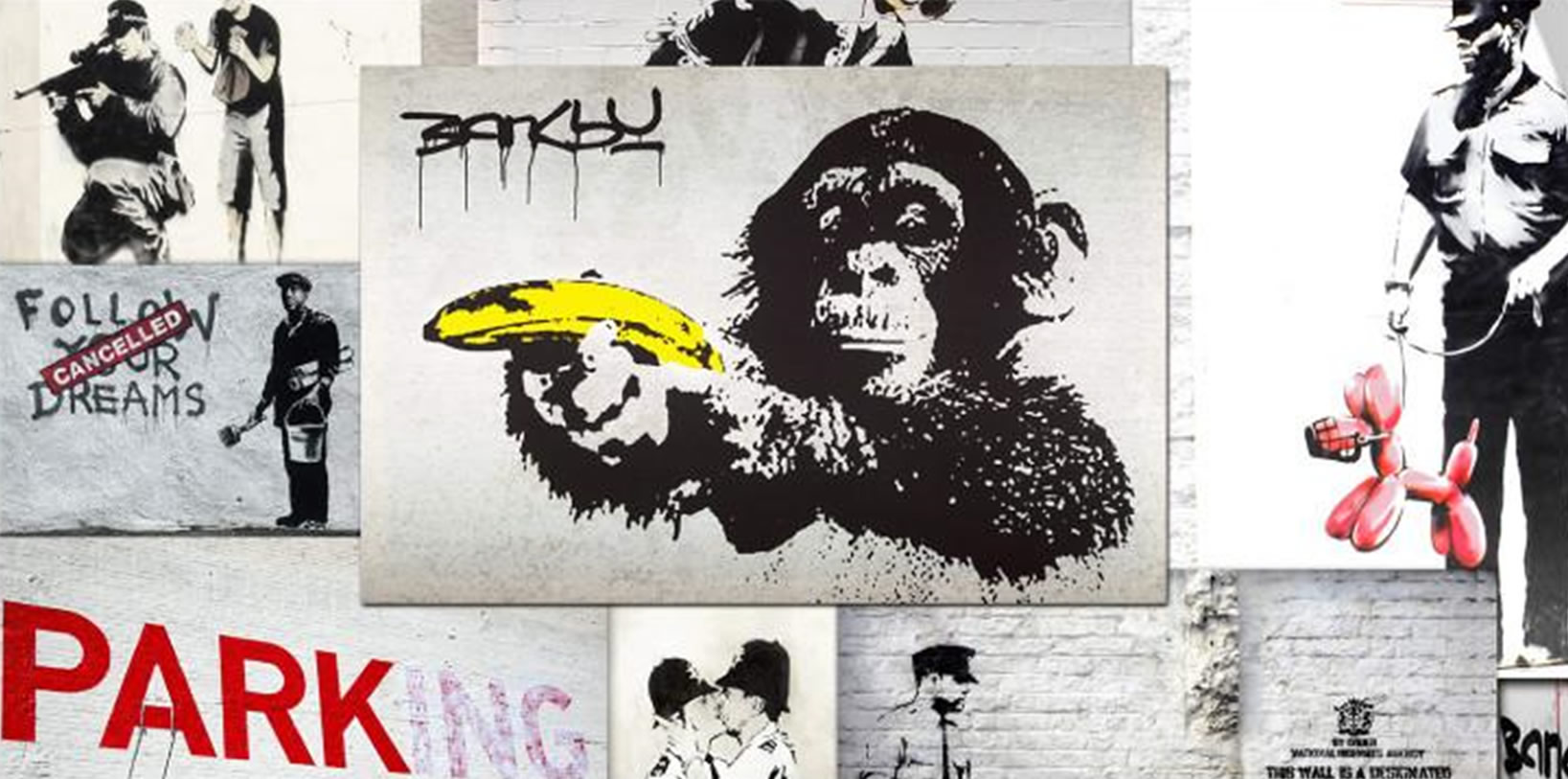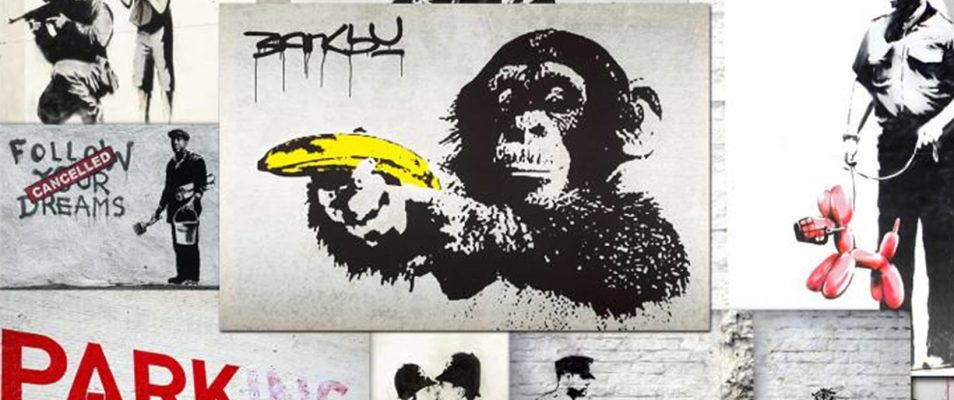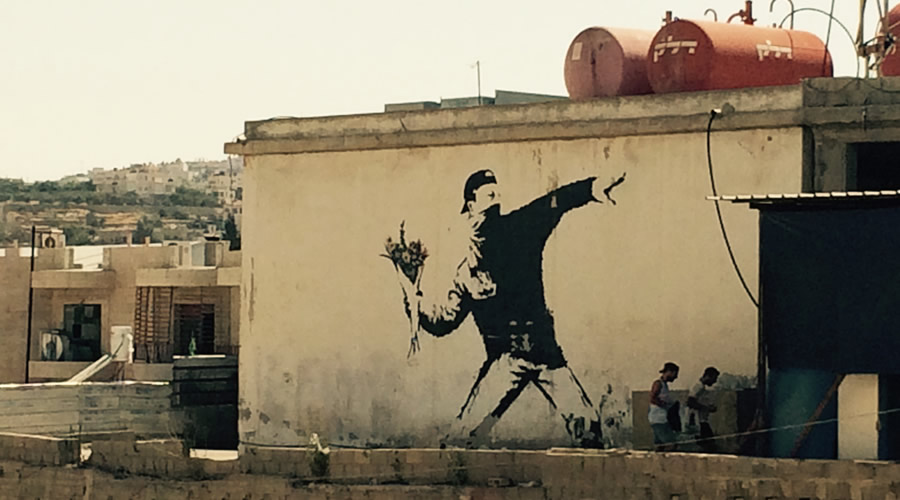How do we frame Banksy's art?
One of the most provocative street artists is the British Banksy (Nobis, n.d.), who is well-known for his polemic expressions in art including issues concerning politics and social problems touching on matters such as war, poverty and social stratification. The artist’s work often contains humor and provocation, while nevertheless always encourages a thoughtful response, leading viewers to reconsider their own perspectives on significant issues, thus creating an environment for dialogue and deep thinking. It is with accessibility that the effectiveness of Banksy’s activism starts when his artistic expression displays in public areas like walls or structures, allowing a wider audience to view it.
Another important aspect of Banksy’s advocacy is the artistic innovation and wit it displays. Using humor and irony, the artist questions the prejudices that the audience has towards certain issues. This can be illustrated by one of his artworks entitled “Bomb Hugger” which pictures a young character embraced with an explosive. Some critics have argued that this simplification undermines the power of Banksy’s art or raises questions as to how effective they are in offering tangible responses to problems he seeks to protest against. Nevertheless, upon closer examination, it can be asserted that Banksy’s activism remains an influential factor in social change since it successfully increases awareness among society concerning major problems and challenges established conventions.
Recently, new events in the Israeli-Palestinian conflict draw my attention to the importance of Banksy’s artistic statements as his art pieces provide a powerful tool for addressing the conflict and cultivating awareness about destructive consequences of violence on human beings. In 2003, he presented a controversial work named “Love is in the Air,” also known as “Flower Thrower.” This work was displayed in the context of the Arab-Israeli conflict. The Israeli government built the West Bank Wall with the goal of building a physical barrier to separate the Palestinian population living in the West Bank from the Jewish population living within Israel’s borders. Following the construction of the wall, the artist worked on this graffiti piece in Jerusalem’s renowned holy district, featuring a young protester symbolically throwing flowers (Brenner, 2019).
This artwork sparked considerable debate, but it was also understood by some as an appeal for a collective peace resolution. Despite the lack of recognition from the Israeli government, the image was acclaimed by freedom fighters all over the world (Brenner, 2019). “Rage, the Flower Thrower” by Banksy illustrates the essence of Palestinian resistance and sends a clear message to the spectators that even under war situations there prevails possibilities for peaceful solution.
Much of Banksy’s artwork is perishable in nature, with graffiti pieces easily removable either by painting them over or eliminating them completely and stencils able to simply come unwalled. It allows him to focus only on his work as he is not distracted by fame or the problematic concerns that come with being well-known. His art also has an enjoyable and subversive artistic style, which makes his art accessible for mass consumption and increases his popularity.
In essence, this makes Banksy an intricate and controversial figure. Have his artistic contributions played a significant role in shaping public awareness of crucial issues, particularly in the realms of social and political discourse? Does this lead us to question if Banksy’s work is (legit) activism?
Have a look at my next post to find out more about his artwork and make your own impressions on the topic.



